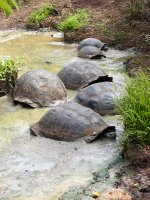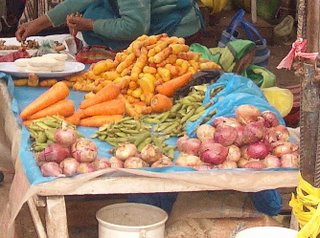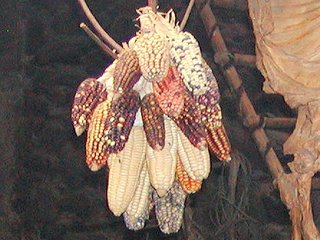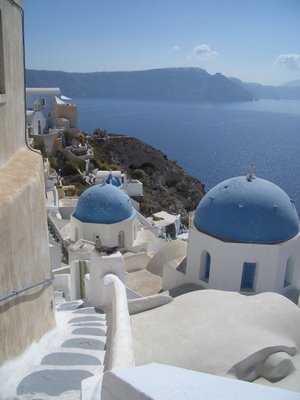
Most people have heard of the lost city of Atlantis. The legend says it was a thriving civilization that disappeared almost overnight. It was supposedly swallowed by the sea.
As we entered the harbor at Santorini, I could tell it was the result of a volcanic eruption.
It’s easy to visualize and there is still parts of these islands that are still smoldering.
The city is located on top of a nearly vertical cliff and you can see layers and layers of volcanic ash along the caldron walls.
Is this where the lost city of Atlantis used to be?
 Well…one thing for certain, there was an enormous “Big Bang” here once and as I mentioned earlier, it’s still smoldering.
Well…one thing for certain, there was an enormous “Big Bang” here once and as I mentioned earlier, it’s still smoldering. 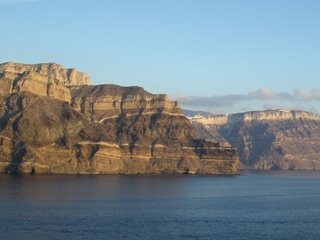
There have been “Big Bangs” several times in history but NOTHING like the one in Santorini.
It was devastating….
Science has determined there were tidal waves and destruction for hundreds of miles when this happened.
There are three ways to enter the city while moored in this harbor.
Take the elevator,
walk, or ride a donkey.
We took the scenic route up the elevator and wandered around the city for several hours. The city is a labyrinth of streets and it’s easy to lose yourself in this puzzle designed to hinder pirates and conquerors that have invaded this city for centuries.
We visited several other islands while in this area and we walked along beaches watching nude sun worshipers.
No….I didn’t take any pictures but I have fond memories.




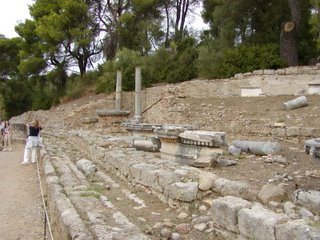
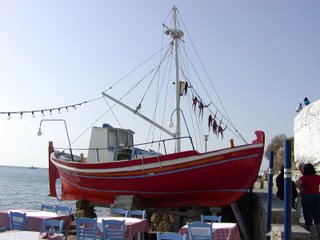



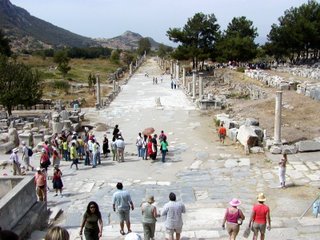
 This is going to be a much different trip than the one in my Navy days. The Mediterranean Sea is a very interesting place and I am looking forward to seeing it through the eyes of an older person.
This is going to be a much different trip than the one in my Navy days. The Mediterranean Sea is a very interesting place and I am looking forward to seeing it through the eyes of an older person.


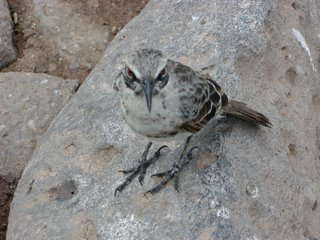 The Mockingbirds cleverly determined our drinking water was in the plastic bottles we carried on shore. Whenever they saw a clear plastic bottle, they automatically expected a free drink because fresh water is RARE on the islands.
The Mockingbirds cleverly determined our drinking water was in the plastic bottles we carried on shore. Whenever they saw a clear plastic bottle, they automatically expected a free drink because fresh water is RARE on the islands.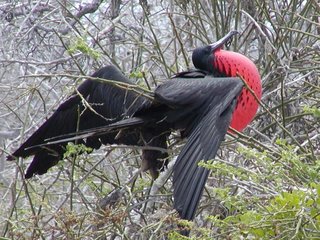 We didn’t see a lot of Flamingos but I got a good shot of this one wading in brackish water and feeding on marine life.
We didn’t see a lot of Flamingos but I got a good shot of this one wading in brackish water and feeding on marine life.  These blue footed birds are famous and you won’t find these at many places in the world.
These blue footed birds are famous and you won’t find these at many places in the world. Our trip was nearing the end now and we would spend a few days in a little town before flying back to Quito and returning home. We had been sailing for about a week and staying on the small boat as we moved between the islands.
Our trip was nearing the end now and we would spend a few days in a little town before flying back to Quito and returning home. We had been sailing for about a week and staying on the small boat as we moved between the islands.





